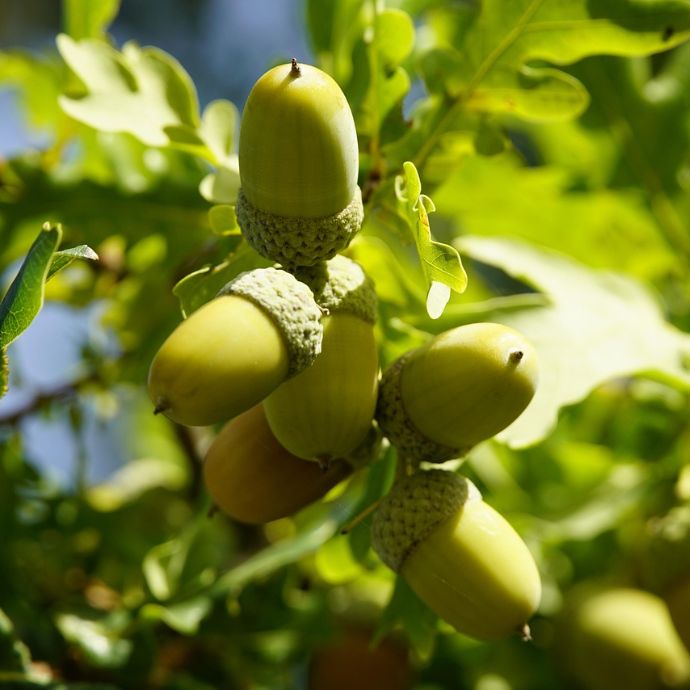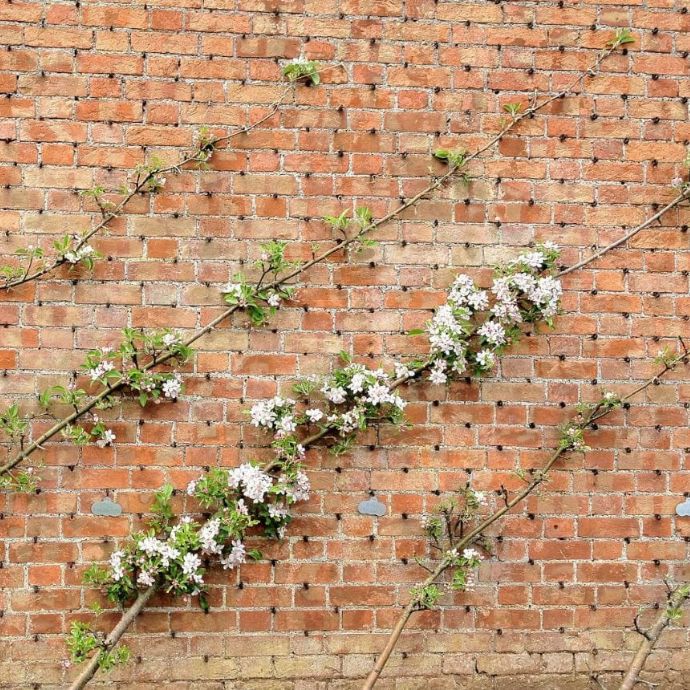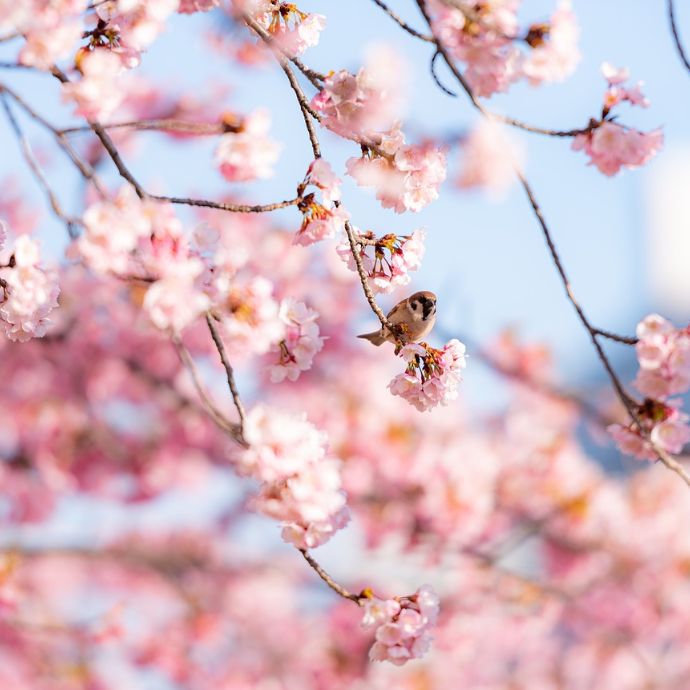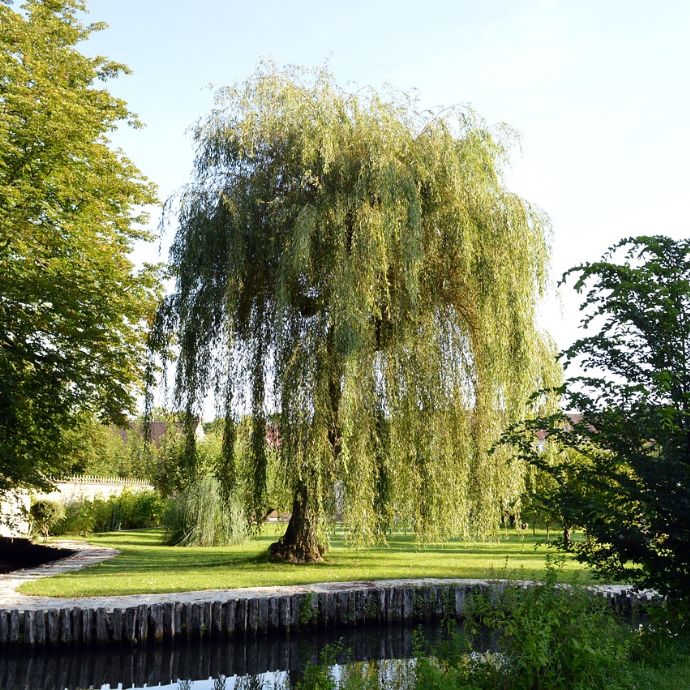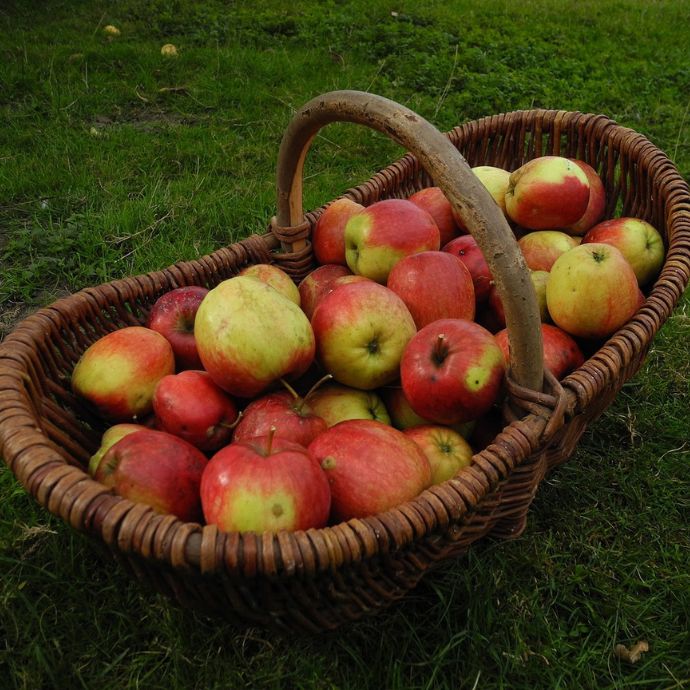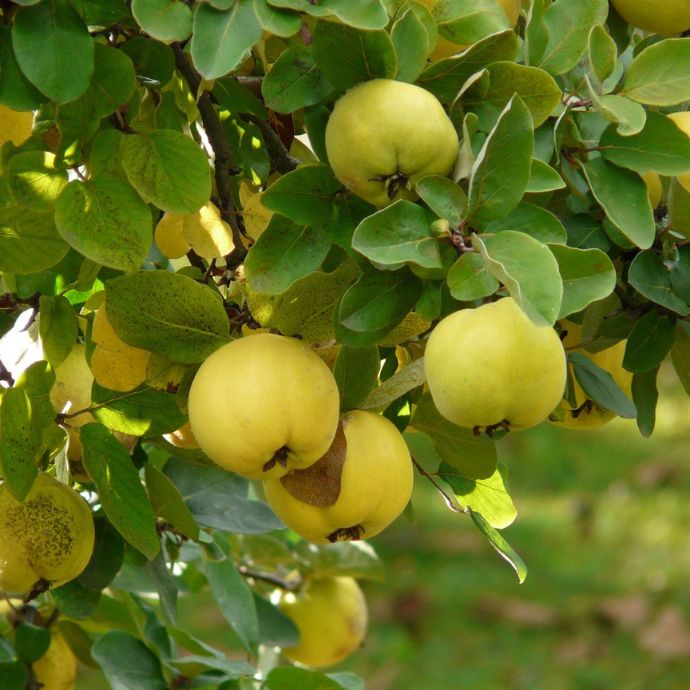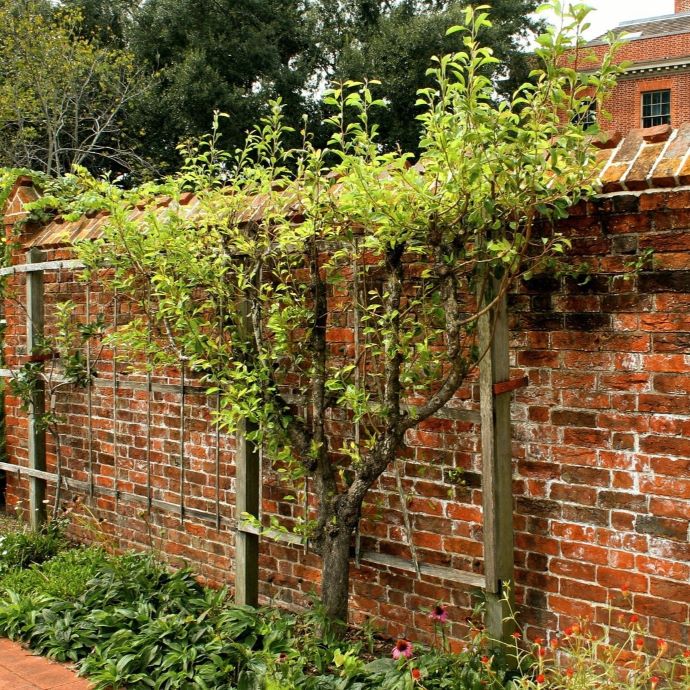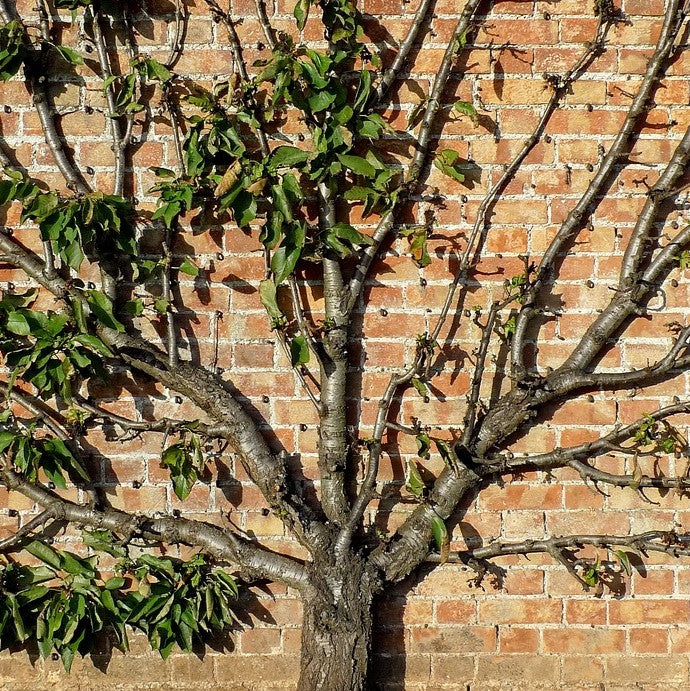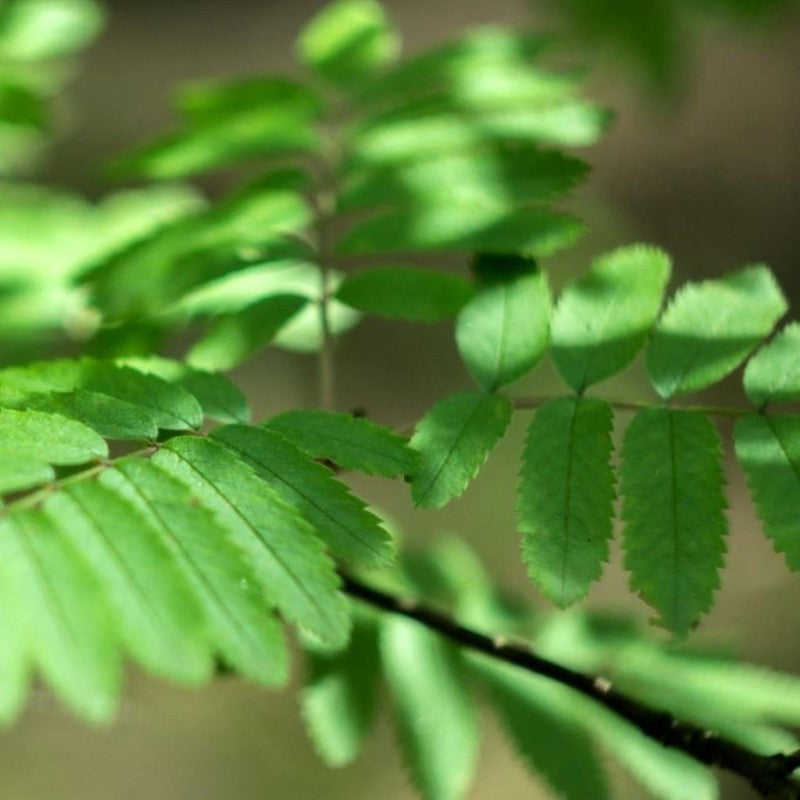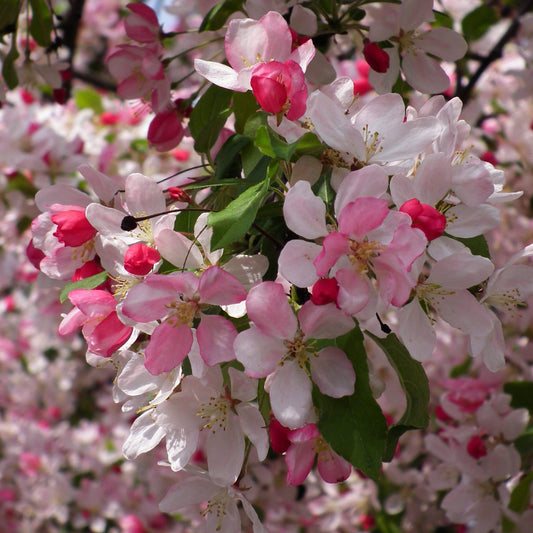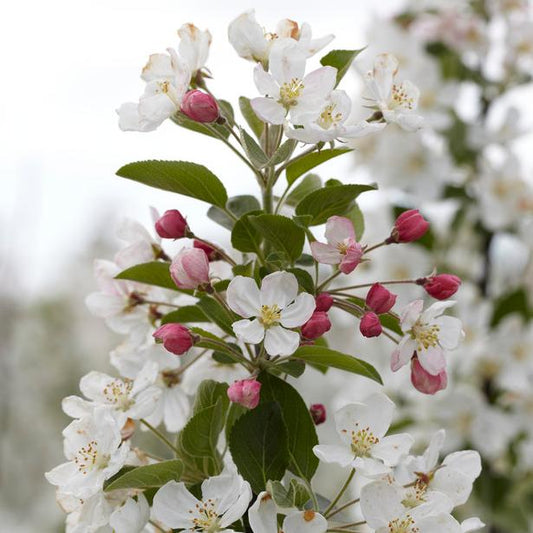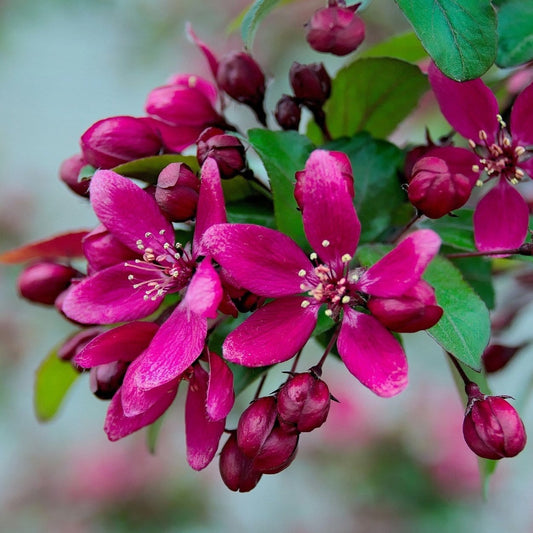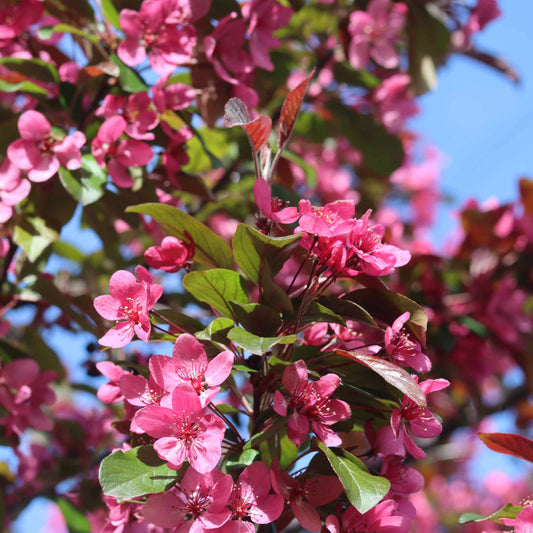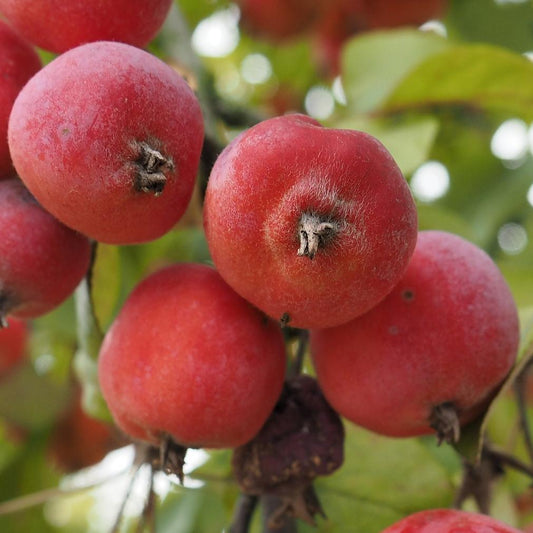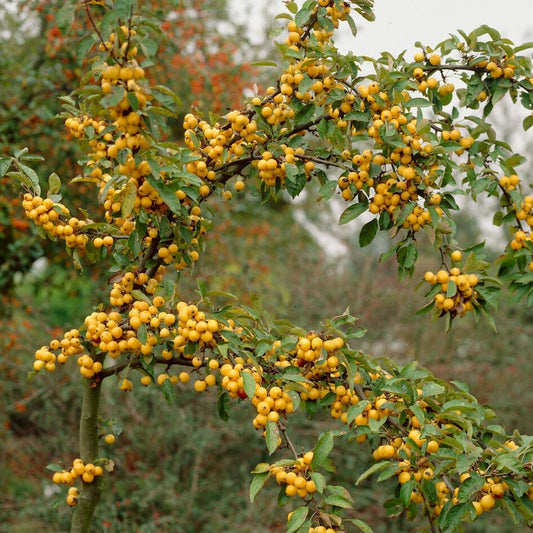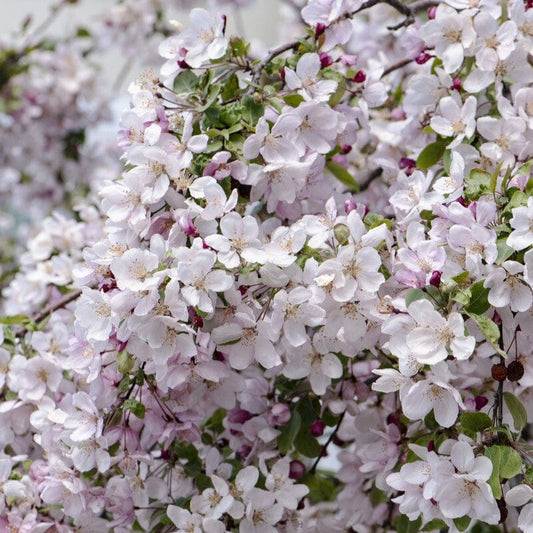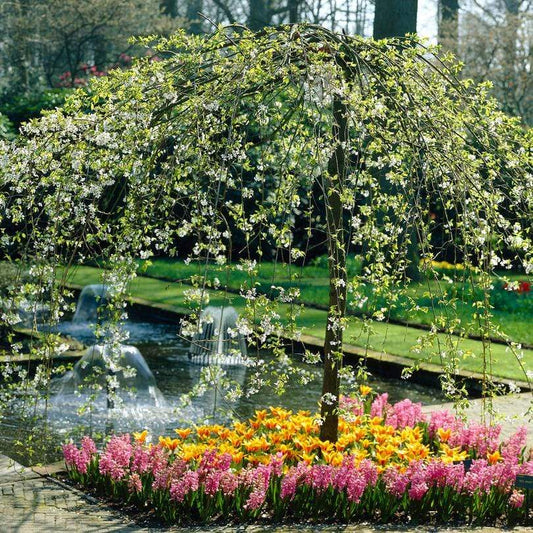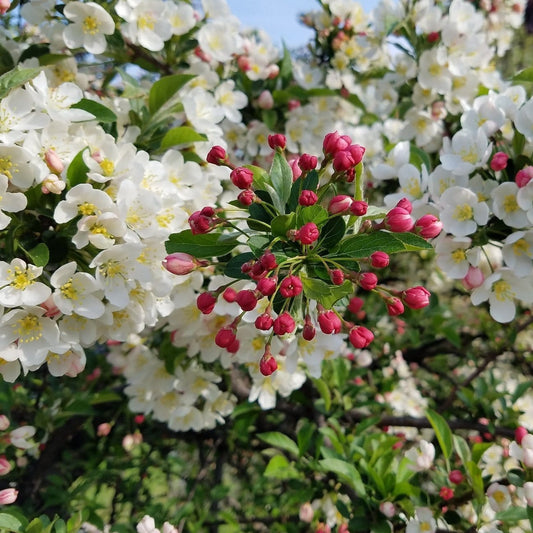Which is the Best Crabapple Tree for Your Garden?
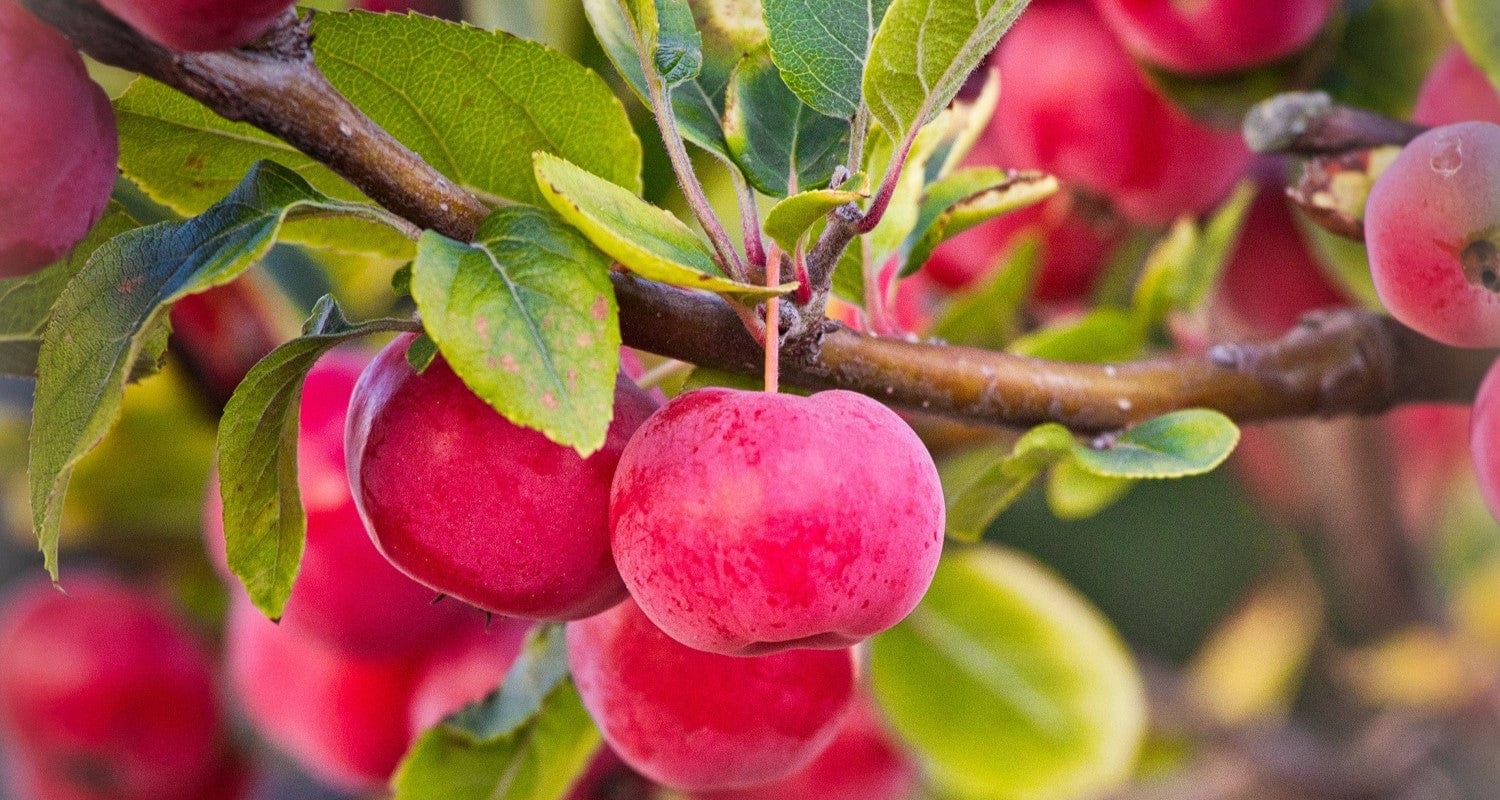
Crabapple trees are compact enough for the smallest of gardens or growing in pots. They produce clouds of pink or white blossom in spring to attract the bees, brightly coloured fruits for making jelly (or feeding the birds) and warm autumn colours - they’ll even fertilise your other apple trees, giving you a bigger crop.
The best bit is how easy they are to grow! Crabapples are rarely bothered by pests and diseases and can pretty much be left alone once they’re established. Our expert growers shared their favourite crabapple varieties for blossom, fruit, autumn colour and more, then gave us some useful hints on how to get the best from them.
Jump to:
- Best blossom
- Best for small spaces
- Best autumn colour
- Best for birds
- Best for jelly
- Best for pots
- Best for bees
- Best weeping
- Best fragrance
- How to get the most from your crabapple tree
What is the best crabapple for blossom?
Japanese Crabapple Tree (Malus floribunda)
In spring, the award-winning Japanese crabapple explodes in clusters of blush pink, single flowers that emerge from carmine red buds. These have a light fragrance and are rich in nectar and pollen, attracting bees and butterflies to your garden.
What is the best crabapple for small spaces?
'Evereste' Crabapple Tree
'Evereste' is a well-shaped and compact tree that’s just perfect for planting in a lawn, border or container. It grows to just 4x4m and can be pruned to fit even the smallest garden. This crabapple bears unusually large single white flowers which turn pink as they mature.
What is the best crabapple for autumn colour?
'Royalty' Crabapple Tree
'Royalty' makes a striking specimen tree, with deep purple leaves that turn to a rich crimson red in autumn to complement the shiny, cherry red fruits. Its spring blossom continues the theme, with magenta purple flowers emerging from wine red buds.
What is the best crabapple for birds?
'Profusion Improved' Crabapple Tree (Malus moerlandsii)
Birds love to eat crabapples - but not all crabapples. If you’re keen on attracting feathered friends to your garden, go for a variety with smaller fruits such as 'Profusion Improved'. As the name suggests, it produces masses of little purple apples which stay on the tree longer to provide bird food throughout winter.
What is the best crabapple for jelly?
'Jelly King' Crabapple Tree
One of the best reasons to own a crabapple tree is crabapple jelly, the best (IMHO) hedgerow treat you can make. The large, orange crabapples of 'Jelly King' are some of the best tasting you can get, high in natural pectin and vitamin C. They stay on the tree until December, just in time for homemade Christmas gifts! (HINT)
What is the best crabapple for pots?
'Golden Hornet' Crabapple Tree
'Golden Hornet' might just be the picture perfect ornamental tree (birds, butterflies and bees seem to agree with us!). It’s a naturally well-shaped little crabapple which is just made for growing in pots and small gardens. In spring it’s covered in clouds of white, pink-tinged blossom followed by golden yellow fruits.
What is the best crabapple for bees?
'Pink Glow' Crabapple Tree
Crabapple trees are an excellent choice for attracting bees and other pollinators, and one of the very best is 'Pink Glow' (an RHS Plants for Pollinators variety) with its abundant pink-white single blossoms (the easily accessible kind) which are rich in nectar and a favourite with butterflies, too.
What is the best weeping crabapple?
'Sun Rival' Crabapple Tree
Weeping trees are some of the most graceful and elegant trees you can put in your garden and yes, they come in crabapple! Award-winning 'Sun Rival' forms a natural umbrella-shaped dome of pendulous branches which are covered in pink and white blossom in the spring. The fruits are bright red and loved by the birds.
What is the best crabapple for fragrance?
'Professor Sprenger' Crabapple Tree
'Professor Sprenger' is our choice for fragrance, excelling not only in the scent stakes but in its orange-red edible fruits, which are great for cooking. The white spring blossom is sweet scented and appears in huge clusters that almost hide the branches altogether. Plant it near your front door or seating area for maximum effect!
How do you get the best from your crabapple tree?
1. Positioning your crabapple
Crab apples will grow best in a sunny spot, but will tolerate a little afternoon shade. The soil type doesn’t matter as long as it’s well drained and kept moist - dig in some manure or compost when planting if your soil quality is poor and your new tree will thrive.
2. Pruning your crabapple
Crabapple trees need very little maintenance - if you need to, you should prune them in the dormant season, preferably in late winter or early spring. Remove any dead, diseased, and damaged twigs or branches, and any suckers that may have appeared in the surrounding soil.
3. Feeding your crabapple
The spring after planting your crabapple tree, give it a 5cm layer of mulch (compost or well rotted manure is best) around the base. You can also give it a sprinkle of slow-release fertiliser too. If you repeat this each spring, you’ll get the best possible blossom and fruit.
4. Watering your crabapple
Crabapples need regular watering during their first year to keep their roots moist. Once established, they’re drought resistant and you won’t need to water them unless we have a run of hot, dry weather in summer.
5. Harvesting your crabapples
Your crabapples will be ready to harvest between September and November, depending on the variety. If you pick them before they’re fully ripe they will be bitter, but you don’t have to take a bite to test them. Just cut open a crabapple or two and look at the seeds. If they’re light coloured (white, green or beige) they need more time. Once the seeds have turned dark brown, your fruits are ready to be picked.
Last updated: 27/10/2025


